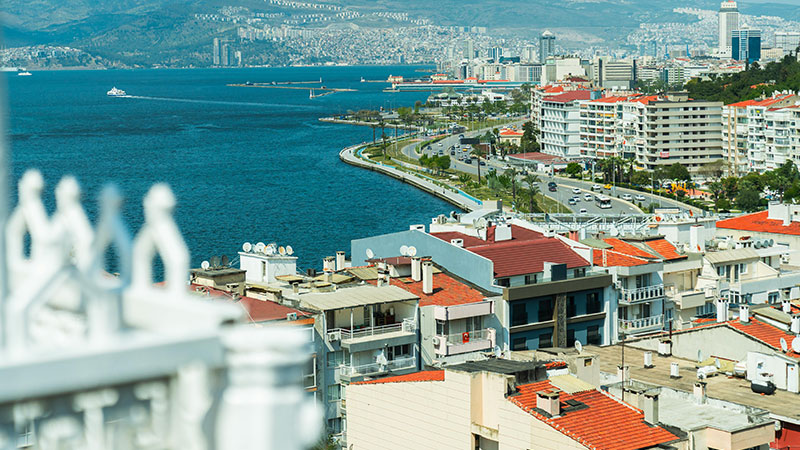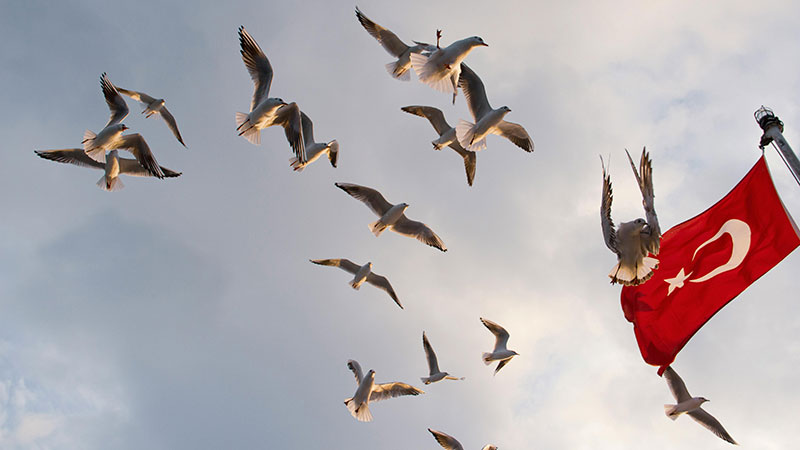What you read in this article:
Turkey is divided into 81 provinces, a structure designed to manage a country that spans two continents, hosts millions of residents, and carries thousands of years of cultural significance.
This number, 81, may look simple at first glance, but behind it lies a story of geography, politics, migration, history, and rapid development. Anyone planning to live, invest, travel, or study in Turkey inevitably begins with the same question: How many provinces are there, and what makes each one important?
Understanding Turkey’s provincial system offers clear answers to everyday concerns:
- Where are the economic centers?
- Which provinces are best for tourism, education, or business?
- How does the government divide responsibilities across regions?
- Why do certain provinces, like Istanbul, Ankara, Izmir, and Antalya, play such a major role nationally and globally?
This article provides a direct, fact-based explanation of Turkey’s 81 provinces, their organization, what makes each region unique, and why some provinces are more significant due to population, location, and economic impact.
Turkey’s provinces are called “iller” in Turkish, and each is governed by a Vali (Governor) appointed by the central government. Provinces are then divided into districts (“ilçeler”), the smallest administrative units that control daily services such as local transportation, municipal planning, and neighborhood management.
Knowing the Turkish names for these units is helpful for anyone interested in the country’s culture and administration, which naturally leads to the question: to communicate with people in these provinces, you must know What Language Turkish People Speak. Istanbul alone has 39 districts, while smaller provinces such as Bayburt or Ardahan have only a handful.
From the bustling streets of Istanbul, the economic heart of the nation, to the government corridors of Ankara, the capital, and the Mediterranean charm of Antalya, Turkey’s provinces each contribute to the country’s identity. Some are developed mega-centers; others are rural and historical, holding ruins older than most civilizations.
Before diving deeper into key provinces, let’s unpack the national structure and understand why the number 81 became the final shape of modern Turkey’s administrative map.
This foundation makes the rest of the provincial story clearer, especially for travelers, students, investors, and anyone curious about how Turkey operates as a whole. Once we understand the system, exploring the major provinces becomes much more meaningful.

How Many Provinces Are in Turkey?
Turkey has 81 provinces of Turkey, a number that has remained stable since the 1990s, when the last new provinces, such as Karabük and Yalova, were officially created. These provinces vary hugely in size, population, resources, and strategic importance. Each province has specific responsibilities, including security, education, healthcare, trade, and transportation.
Turkey’s Regional Division
Even though Turkey officially recognizes provinces as the main administrative unit, the country is also grouped into seven geographical regions:
- Marmara
- Aegean
- Mediterranean
- Central Anatolia
- Black Sea
- Eastern Anatolia
- Southeastern Anatolia
These regions are not administrative divisions but cultural and geographical categories used for statistics and planning.
Major Provinces and Their Importance
Istanbul: Economic Powerhouse of Turkey
Istanbul is Turkey’s largest province by population, home to more than 15 million people. It is the only city in the world located on two continents, Europe and Asia. Istanbul’s importance is driven by:
- Trade and finance: It hosts the Borsa Istanbul (stock exchange), global banks, and Türkiye’s biggest companies.
- Tourism: Landmarks like Hagia Sophia and Topkapı Palace attract millions.
- Industry: From textiles to technology, Istanbul is a production hub.
Istanbul’s 39 districts form a massive metropolitan area that functions as a miniature version of Turkey itself, diverse, energetic, fast-growing, and culturally layered.
Ankara: The Administrative and Political Capital
Ankara, in Central Anatolia, is the second-largest city and the political center of Turkey. It became the capital in 1923 under Mustafa Kemal Atatürk. Key strengths include:
- Government institutions: The Presidency, ministries, parliament, and embassies.
- Education: Home to top universities such as Middle East Technical University (METU) and Hacettepe University.
- Defense industry: A fast-growing sector manufacturing military vehicles, drones, and advanced technology.
Ankara is quieter than Istanbul but more organized, with a strong local economy and a high quality of life.
Izmir: The Aegean’s Cultural and Trade Center
İzmir is the third-largest province, famous for its seaside lifestyle and long history. Known as Smyrna in ancient times, İzmir is still one of Turkey’s most modern and liberal provinces of Turkey. The warm atmosphere here is often a reflection of the famously welcoming nature of locals across the country.
If you’re curious about the local culture and hospitality, you might want to know: Are Turkish People Friendly?
Key features include:
- Port of Izmir: One of Turkey’s largest export centers.
- Tourism: Close to Ephesus, Çeşme, and Kuşadası.
- Agriculture and industry: Strong production of olives, cotton, and food products.
Izmir combines coastal comfort with economic strength.
Antalya: Capital of Tourism
Antalya is Turkey’s tourism magnet, drawing over 10–15 million tourists annually, especially from Europe, Russia, and the Middle East.
Why Antalya matters:
- Resort cities like Alanya, Kemer, Side, Kaş, and Belek.
- Beautiful beaches and a warm Mediterranean climate.
- Historical sites such as Aspendos and Termessos.
Antalya is a unique mix of hospitality, agriculture, and natural beauty.
Bursa: Industrial and Historical Center
Bursa was once the first capital of the Ottoman Empire. Today it is:
- A major industrial hub producing textiles, automotive parts, and machinery.
- Home to Uludağ, a famous winter ski resort.
- Known for green landscapes and high living standards.
Bursa’s economy is one of the strongest outside Istanbul.

Konya: Turkey’s Largest Province by Area
Konya is geographically huge and historically rich. Known for:
- Agriculture: One of the country’s top producers of wheat and grains.
- Sufism and Rumi: The city hosts the Mevlana Museum, visited by millions.
- Renewable energy: A growing investment area, especially solar fields.
Konya’s role is both spiritual and economic.
Gaziantep: Culinary and Trade Capital of the Southeast
Located in Southeastern Anatolia, Gaziantep is famous for:
- Cuisine: Especially Antep baklava.
- Industry: Strong textile and food production.
- Proximity to Middle Eastern markets makes it a major trade corridor.
It has one of Turkey’s fastest-growing economies.
Trabzon: Black Sea’s Cultural Anchor
Trabzon stands out for:
- Natural beauty: Uzungöl, Sumela Monastery, and lush mountains.
- Fishing and tea production.
- A strong football culture, symbolized by Trabzonspor.
The province is a gateway to the Caucasus.
Why the Number 81 Matters?
The number 81 is critical because it represents the total count of provinces of Turkey (iller) that form the backbone of the country’s administrative structure. This decentralized division ensures that governance, resource allocation, and essential services are managed efficiently across the nation’s diverse geography.
By having 81 distinct provincial governments, Turkey can maintain a balance between the hyper-developed economic centers like Istanbul and İzmir, rapidly growing industrial cities such as Konya and Gaziantep, and historically rich yet often rural regions like Kars, Mardin, and Şanlıurfa.
This structure guarantees that every area, regardless of its size or economic output, receives the specific attention and dedicated administration needed, allowing each province to contribute uniquely, whether through tourism, agriculture, trade, or industry, to the overall national development.
Conclusion
Turkey’s 81 provinces form a wide mosaic of cultures, landscapes, and economic strengths. From the crowded European shores of Istanbul to the calm Mediterranean bays of Antalya, and from the political corridors of Ankara to the green mountains of the Black Sea, each of the provinces of Turkey has its own identity and role.
Understanding these divisions gives travelers, investors, students, and residents a clearer picture of how Turkey works and why it remains one of the most dynamic countries between Europe and Asia. The provincial structure is not just geography; it is the backbone of how the country lives, grows, and connects.
FAQ
Turkey has 81 provinces, each governed by an appointed governor.
Istanbul is the most populated, with over 15 million residents.
Konya is the largest by area, located in Central Anatolia.





Comments